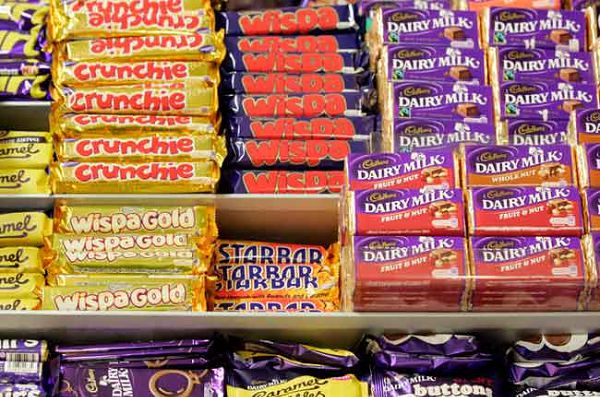
Chocolate imports cost US$45m
In spite of being the second largest grower of cocoa in the world, Ghana spends an average of US$45 million (GH¢216 million) every year to import chocolate and other cocoa derivatives for special occasions such as Christmas and Valentine’s Day.
The imports are mostly done in the last quarter of the year, strategically to meet increased demand during the Christmas and New Year celebrations in December and January respectively, with some reserved for hampers to mark Valentine’s Day celebrations on February 14, the Managing Director of Cocoa Processing Company (CPC) Limited, Nana Agyenim Boateng I, said in an interview.
Advertisement
Nana Boateng I told the GRAPHIC BUSINESS on February 8 that the imports were mostly to meet the country’s strong appetite for foreign chocolates, which was fuelled, largely, by a seeming lack of local substitutes.
He said CPC, which had been in operation since 1965, stumbled upon the data on the strong appetite for imported chocolate during a market survey that preceded the introduction of its latest range of artisanal chocolates in December last year.
It’s doable
Seen as a way to announce its come back into the cocoa processing business after surviving some operational challenges in the recent past, CPC's new products are a direct response to the increased importation of chocolate and cocoa derivatives by a country that produces the world's premium and most sought-after cocoa bean.
When successful, the products could help close the import gap, thereby saving the economy and the cedi in particular, foreign currency outflows to fund these imports.
Nana Boateng I said the challenge now was how to make the consumer, who was used to foreign products, see that what non-cocoa growing countries could do, Ghana, through CPC, could do better.
"Now, we are targeting the supermarkets and the big shops for the consumer to distinguish between our products and the other ones that are imported.
"So that if it is the almonds, walnuts, pistachios and macadamias, which they are looking at as something out of the world, then CPC is challenging itself to say that it is doable," he said.
He explained that the introduction of the new products, which come in different flavours, was part of a strategy to revitatlise the company and use it to grind more of Ghana’s cocoa beans.
CPC has two factories with a combined capacity of 64,500 tonnes of cocoa beans every year.
Flavours
Nana Boateng I pinned the success of the company’s innovation on consumer insight, explaining that both the board and management of the company were optimistic that “the CPC one will thrive overtime” after consumers had tasted both products.
CPC’s range of artisanal chocolate include caramel rich milk chocolate, ginger-flavoured dark chocolate, milk chocolate with cocoa nibs, mint-flavoured dark chocolate and strawberry-flavoured white chocolate.
The rest are the Irish cream flavoured combined white and milk chocolate, white chocolate with cocoa nibs, coffee-flavoured milk chocolate and milk chocolate with peanuts.
Impact on economy
Although Africa produces almost 75 per cent of global cocoa output, it enjoys only five per cent of the US$100 billion chocolate industry, according to the African Development Bank (AfDB).
Switzerland and Belgium, the world’s top two producers of chocolate, reportedly earn some US$14 billion and US$12 billion respectively from the product on an annual basis.
Nana Boateng I said it was worrying that Ghana was losing out on artisanal chocolate, which was creating “huge revenue for other countries.”
Should CPC succeed in turning consumer appetite for foreign sourced chocolate to the locally manufactured one, he said “the net benefit effect is that this money, the cedis, which would have been exchanged and giving a toll on the local currency to bring these imports in, will be used for other things.”
“Besides, there will be employment,” he said.
He explained that beyond those employed to work in the factory, the new products had created an additional business line for suppliers across the country.
Domestic processing
Ghana has about seven major cocoa grinders, with a combined capacity of about 500,000 tonnes per annum – more than 50 per cent of the country’s annual cocoa output, which averages 850,000 tonnes.
Until the 2017/2018, when domestic processing rose to 34 per cent, less than 20 per cent was processed locally.
Now, the government is aiming to process 50 per cent of annual output under a strategy that hinges on increasing earnings from the industry through value addition and export of finished or semi-finished products.
The Chief Executive Officer of the Ghana Cocoa Board (COCOBOD), Mr Joseph Boahen Aidoo, said in an earlier interview that under the strategy, the board was supporting cocoa grinders to source beans on forward contracts to process and repay with the proceeds.




